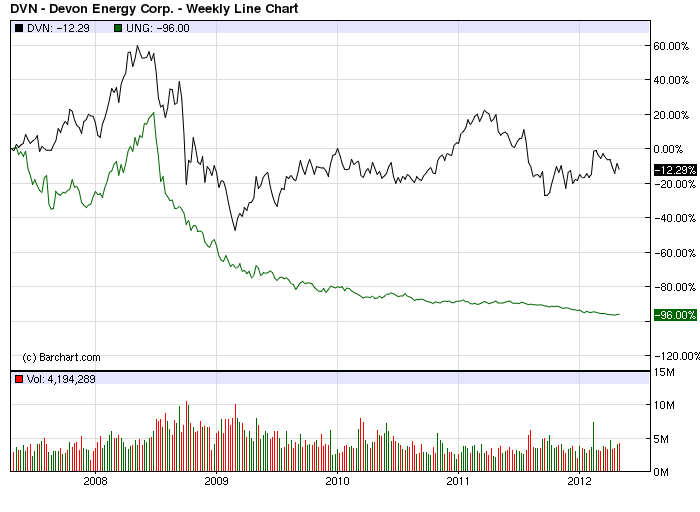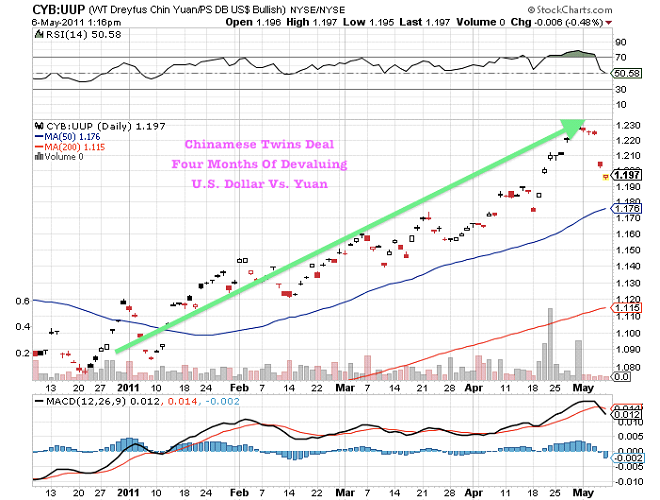A List Of The Top Ten (10) Precious Metals Commodity ETFs (NYSE GLD NYSE IAU NYSE SLV NYSE SIVR
Post on: 17 Май, 2015 No Comment

Have you ever wondered how billionaires continue to get RICHER, while the rest of the world is struggling?
I study billionaires for a living. To be more specific, I study how these investors generate such huge and consistent profits in the stock markets — year-in and year-out.
CLICK HERE to get your Free E-Book, “The Little Black Book Of Billionaires Secrets”
We’re not ranking these ETFs favoring one over another so don’t let the listing order mislead you. Although we may use some of these in ETF Digest portfolios it’s not our intention to recommend one over another.
Whereas our previous technical analysis methodology involved using evaluating monthly charts commodity markets must be viewed with shorter time horizons. This is due to obvious increased volatility but also due to the peculiar nature with which underlying commodity contracts trade. Most futures contracts to which ETF/ETNs are linked expire quarterly. To be effective, direct commodity investing requires investors to be more active although investors in gold in particular view the asset now as a long term hold. Nevertheless, we’re willing to trade them with the trend being out sometimes when it was more prudent to stay in with hindsight. We do this because we’ve seen large price changes over the years and remaining sanguine about this sometimes aren’t an option. Therefore, it pays to be active and utilize a combination of weekly and daily technical charts to manage risk.
Four risk factors should be considered:
- The CFTC’s varying considerations regarding commodity position limits as applied to the assets of ETF and ETNs—still in limbo.
- Recently commodity exchanges have raised margin requirements to limit speculation.
- The credit quality of ETNs given these are “notes” many guaranteed by Barclay’s and Deutsche Bank.
- Backwardation (back month contracts lower than front month) and Contango (back months higher than front month) can negatively affect contract rollover for investors.
- Since most commodities trade in dollars, the value of the dollar can positively or negatively affect price behavior.
- Frankly, the rise in many precious metals, particularly gold, is much disliked by the powers that be since it’s a negative vote by investors on their stewardship of fiscal and monetary conditions. As a result they may take actions to restrain price rises where and when they can.
ProShares, Direxion Shares and Deutsche Bank features inverse and leveraged long/inverse ETNs for those investors wishing to hedge or speculate. The weekly charts that follow feature 22 period moving averages, Relative Strength indicator and conventional MACD moving averages. Not shown but perhaps referred to are Tom DeMark indicators which we use in conjunction with other proprietary indicators to determine our positions.
SPDR Gold ETF (NYSE:GLD) The Trust holds gold bars and is expected from time to time to issue Baskets in exchange for deposits of gold and to distribute gold in connection with redemptions of Baskets. The investment objective of the Trust is for the Shares to reflect the performance of
the price of gold bullion, less the Trust’s expenses. The Sponsor believes that, for many investors, the Shares represent a cost-effective investment in gold. The Shares represent units of fractional undivided beneficial interest in and ownership of the Trust and trade under the ticker symbol GLD on the NYSE Arca. The fund was launched in November 2004. The expense ratio is .40%. AUM (Assets under Management) equal $70 billion and average daily trading volume is 20M shares. GLD demonstrates better than any other how being first to market for a popular product will allow the issuer to achieve dominance in the space. As of late August 2011 the YTD return was 27%.
20album/image004-37.jpg /%
iShares Gold Trust ETF (NYSE:IAU) The assets of the trust consist primarily of physical gold held by a custodian (J.P. Morgan Chase) on behalf of the trust. The fund was launched in January 2005. The expense ratio is .25%. AUM equal $9 billion and average daily trading volume is less than 10M shares. As of late August 2011 the YTD return was 28%.
20album/image006-36.jpg /%
ETF Securities Swiss Gold Shares (NYSE:SGOL) The shares represent beneficial interest in the Trust. which in turn holds allocated physical gold bullion bars stored in secure vaults in Zurich Switzerland on behalf of the Custodian, J:P Morgan Chase Bank, N.A. Each physical bar is properly segregated, individually identified and allocated towards the property of the Trust. All physical gold conforms to the London Bullion Market Association’s rules for Good Delivery. The fund was launched in September 2009. The expense ratio is .39%. AUM equal $1.7 billion and average daily trading volume is 222K shares. As of late August 2011 the YTD return was 27.80%.
20album/image008-28.jpg /%

PowerShares Gold Fund (NYSE:DGL) follows the DBIQ Optimum Yield Gold Index Excess Return which is a rules based index composed of futures contracts on gold and is intended to reflect the performance of gold. The fund was launched in January 2007. The expense ratio is .50%. AUM equal $370 million and average daily trading volume is 90K shares. As of the end of August 2011 the YTD return was 27%.
20album/image010-26.jpg /%
iShares Silver Trust (NYSE:SLV) The assest of the trust consist primarily of silver held by the custodian on behalf of the trust. The objective of the trust is for the shares to reflect the price of silver less the trust’s expenses and liabilitities. J.P. Morgan Chase London branch is the custodian of the trust. The fund was launched in April 2006. The expense ratio is .50%. AUM equal $12 billion and average daily trading volume is 157K shares.
20album/image012-25.jpg /%
ETF Securities Physical Silver Shares (NYSE:SIVR) The Shares represent beneficial interest in the Trust, which in turn holds physical allocated silver bullion held in vaults by the Custodian (HSBC Bank USA N.A.). All physical silver held with HSBC conforms to the London Bullion Market Association’s (LBMA) rules for Good Delivery. The fund was launched in July 2009. The expense ratio is .30%. AUM equal $760 million and average daily trading volume is 550K shares.
20album/image014-25.jpg /%
ETF Securities Physical Plantinum Shares (NYSE:PPLT) The Shares represent beneficial interest in the Trust which in turn holds allocated physical platinum bullion bars stored in secure vaults in London and Zurich on behalf of the Custodian, JPMorgan Chase Bank, N.A. Each physical plate and ingot is properly segregated, individually identified and allocated towards the property of the Trust. All physical platinum conforms to the London Platinum and Palladium Market (LPPM) rules for Good Delivery. The fund was launched in January 2010. The expense ratio is .60%. AUM equal $865 million and average daily trading volume is 66K shares. As of late August 2011 the YTD return was less than 3%.
20album/image016-25.jpg /%
ETF Securities Physical Palladium Shares (NYSE:PALL) The Shares represent beneficial interest in the Trust, which in turn holds allocated physical palladium bullion bars stored in secure vaults in London and Zurich on behalf of the Custodian, JPMorgan Chase Bank, N.A. Each physical plate and ingot is properly segregated, individually identified and allocated towards the property of the Trust. All physical palladium conforms to the London Platinum and Palladium Market (LPPM) rules for Good Delivery. The fund was launched in January 2010. The expense ratio is .60%. AUM equal $685 million and average daily trading volume is 165K shares. As of late August 2011 the YTD return was -5.70%.
20album/image018-25.jpg /%
PowerShares DB Precious Metals Fund (NYSE:DBP) follows the DBIQ Otitim Yield precious metals Index Excess Return which is a rules based index compoased of futures contracts in both gold (80%) and silver (20%). The fund was launched in January 2007. The expense ratio is .75%. AUM equal $684 million and average daily trading volume is 150K shares. As late August 2011 the YTD return was 28.30%.
20album/image020-23.jpg /%
iPath Dow Jones-UBS Precious Metals ETN (NYSE:JJP) follows the Dow Jones-UBS Precious Metals Subindex Total Return Index which consists of futures contracts in both gold (73%) and silver (26%). The fund was launched in June 2008. The expense ratio is .75%. AUM equal $140 million and average daily trading volume is 22K shares. As of late August 2011 the YTD return was 28.70%.
20album/image022-21.jpg /%
There is a rapidly expanding series of direct precious metals ETFs and ETNs especially when economic, fiscal and central bank monetary policies can dramatically affect prices. Naturally the value of the dollar is another key factor to price behavior. We’ve chosen to feature some ETPs that may be repetitive but clearly have something to offer as well.
One thing seems clear when viewing many of these ETFs are the similar trend patterns many have presented. This is primarily due to globalization but also is the result of easy monetary conditions throughout the developed world allowing for higher prices for many commodities despite misleading official inflation data.
You may address any feedback to: feedback@etfdigest.com
David is founder and publisher of ETF Digest and best selling book author of Create Your Own ETF Hedge Fund, A DIY Strategy for Private Wealth Management published by Wiley Finance in 2008. In July of 2009, Fry was named in the ETF Hall of Fame as one of the Top 25 people who revolutionized the ETF industry and guided ETF investing from its conception to widespread acceptance among all breeds of investors. Fry founded the ETF Digest in 2001 and was among the very first to see the need for an online publication that provided individual investors and financial professionals with trading tools, market information and actionable advice on ETF investing. ETF Digest was recently ranked 9th in the Top 100 ETF websites from Alexa on exchange traded funds. Dave Fry has devoted over 35 years to the business of trading and portfolio management. He is registered as an arbitrator with the Financial Industry Regulatory Authority (FINRA) and the National Futures Association (NFA).














